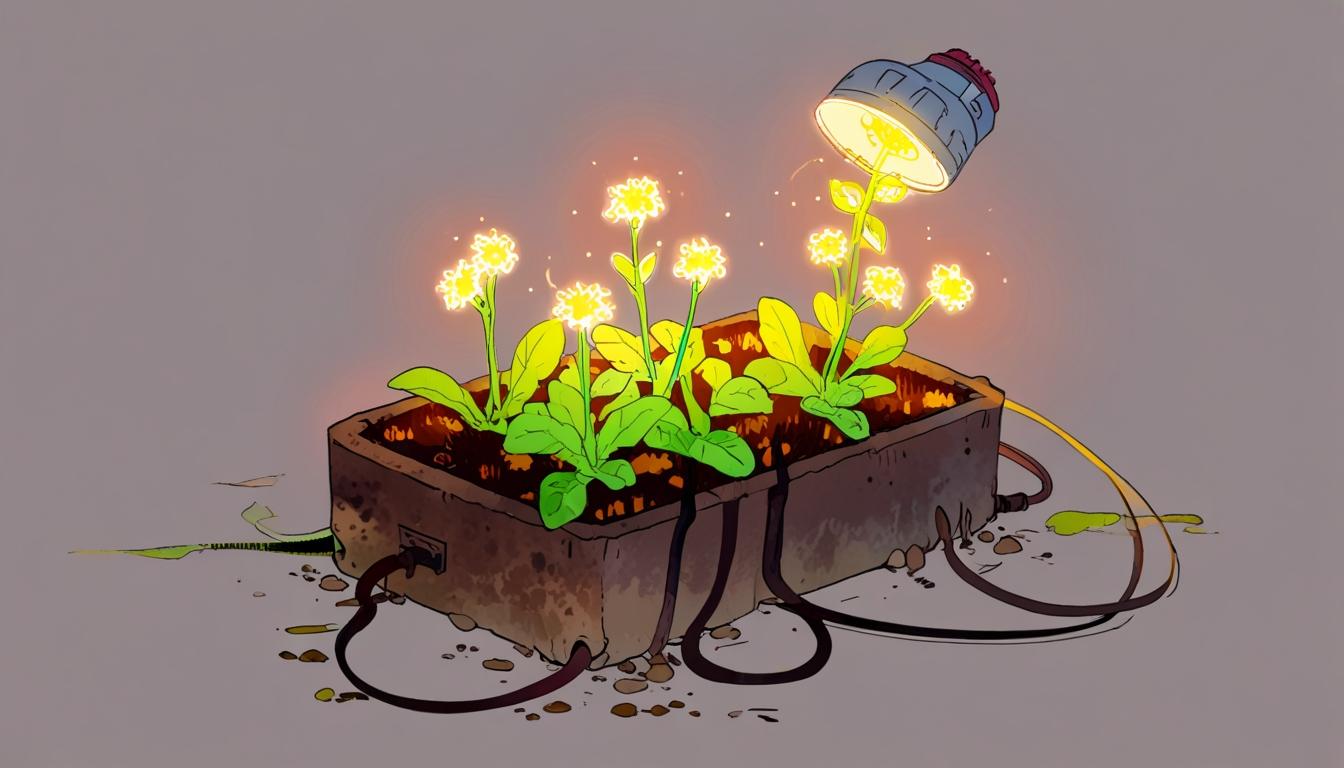Groundbreaking Photoshoot Demonstrates Nature-Powered Energy Production
A pioneering photoshoot, hailed as the world's first to be "powered by nature," has successfully showcased an innovative method of generating energy rooted in the principles of sustainability. This groundbreaking project involved a collaborative effort between Dutch research and design studio Nova Innova and automotive giant PEUGEOT, with photographer George Williams capturing the remarkable images for an exhibition at London’s prestigious Saatchi Gallery.
At the heart of this initiative is the harnessing of ‘plant energy’ through the natural process of photosynthesis. Plants absorb sunlight to facilitate growth and, in the process, produce organic waste. This waste is subsequently broken down by specialised soil bacteria, which release electrons—energy that can be harnessed for practical applications. This concept is not merely theoretical; studies have evidenced the effectiveness of microbial fuel cells in generating electricity from plant roots by tapping into the electrons released during the breakdown of organic matter. These cells can effectively convert organic waste into usable electricity, positioning this technology as a sustainable energy solution for various applications.
For the photoshoot, researchers employed microbial fuel cells strategically placed in the soil, collecting energy generated from the bacterial breakdown of organic matter. This eco-friendly energy was then stored in batteries that powered the lighting for the extraordinary shoot. According to Ermi Van Oers from Nova Innova, this project is not just a first for photography, but a demonstration of what is achievable with current technology. “In the future, we hope this method can be scaled up to power things like household appliances and even parts of vehicles,” they stated.
The energy required for the shoot was generated using a total of 30 microbial fuel cells and utilising natural materials, including a mixture of plant waste, 94 litres of water mixed with 188 litres of mud, and even spent coffee grounds. This diverse mix illustrates the viability of using common organic waste as a power source. Nicola Dobson from PEUGEOT highlighted the innovative nature of the project, expressing that the photoshoot illustrates their commitment to embracing sustainable technology.
The potential of microbial fuel cells extends beyond artistic projects and holds promise for wider applications in renewable energy. As demonstrated in various research studies, such cells can be scaled up for numerous applications, potentially transforming how we power everything from our homes to electric vehicles.
The exhibition at the Saatchi Gallery is a testament to the advancing intersection of art and sustainability, as innovative approaches to energy production continue to emerge. By showcasing a practical use of nature for generating energy, this project not only enhances public awareness of sustainable practices but also inspires a broader conversation about the future of energy solutions.
As the world grapples with climate change challenges, initiatives like this showcase the vital role that creativity and innovation play in pursuing a sustainable future.
Reference Map:
- Paragraph 1 – [1]
- Paragraph 2 – [2], [3]
- Paragraph 3 – [3]
- Paragraph 4 – [1], [5]
- Paragraph 5 – [4], [6]
- Paragraph 6 – [7]
Source: Noah Wire Services
